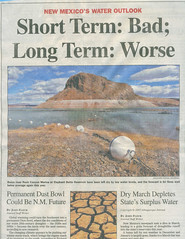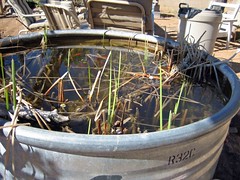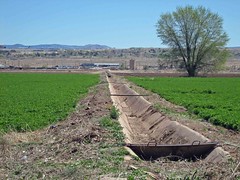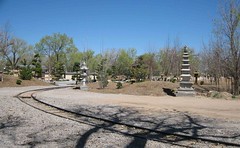Update: Oops, sorry Dr. Myers
P.Z. Meyers Myers is one of the brightest and most interesting writers out there on the front lines of the evolution-creation wars. He’s obviously a very smart guy, who believes passionately that researchers have learned very important things that need to be incorporated into the way we, as a society, approach important problems.
So why, outside his own field, is he so absolutely blind to the research conducted by others?
Meyers’ Myers response to the Mooney–Nisbet piece in science about the use of “framing” as a tool in scientific communication is a crystalline example of the blowback Chris and Matt are receiving from scientists unwilling to accept the clear message of the small mountain of research on how things actually work at the science-media-policy-politics interface(s): the world doesn’t work the way they (the scientists) would like.
Meyers Myers hews to the “deficit model” – the public just doesn’t understand the science well enough, and we need to therefore fix that deficit. But we have a long history of failing at that task, despite the best efforts of people like Meyers Myers. In fact, if you look at the data, things are actually improving – but from an abysmally low baseline of public understanding of science to a slightly less abysmally low baseline of public understanding of science. To keep trying to do the same thing, over and over, that has failed in the past is pathological.
We live in a world in which most members of the general public, on most issues, most of the time, will not understand the science. Period. That’s the reality.
I too suffer from this pathology. I too have dedicated my career to trying to help the public better understand science. But I am increasingly recognizing that the sort of approach Meyer’s is advocating does not work, or at best is capable of only marginally moving things. It’s clear a different approach is needed.
Meyers’ Myers response is classically scientific – a sort of loading dock approach, in which scientists give information to the public. If this can only be done more effectively, he argues, progress can be made. But this ignores the very literature Nisbet and Mooney are citing, which shows why that doesn’t work.
That doesn’t mean there is not important work to be done in the area of science education, and improved science media coverage, which can have some effect over long periods. We must do everything we can to improve science education and the media’s performance. But it’s clearly insufficient.
Meyers Myers and his pals on the scientific loading dock would be well advised, if they really care about helping solve the problems they are working so hard to address, to spend some time in the social science literature Nisbet and Mooney are citing, rather than thinking they know better than the scientists who study the field. In ignoring the data and the literature that surrounds it, they’re making the same mistake they so rightly criticize their opponents for making – ignoring the science.





